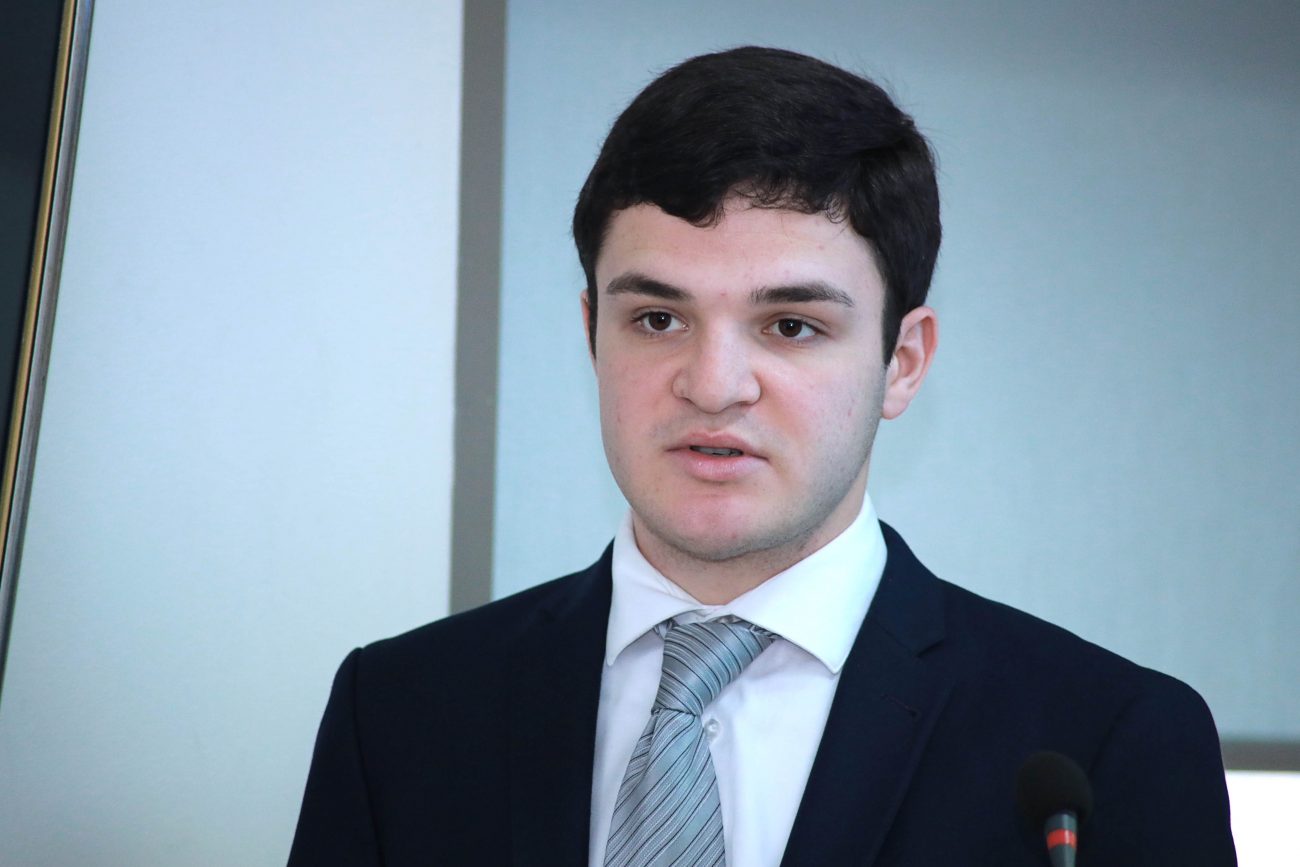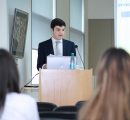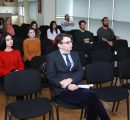
TCPA Scholar Hagop Toghramadjian Delivers Talk on the Syrian-Armenian Experience
4 min readYEREVAN, Armenia – On February 27, the American University of Armenia (AUA) Political Science and International Affairs (PSIA) program held a seminar entitled “Lessons and Surprises from the Syrian-Armenian Experience.” The talk was presented by Hagop Toghramadjian, a Fulbright scholar at the Turpanjian Center for Policy Analysis (TCPA).
Toghramadjian started his presentation by describing the communal life of Armenians in Syria, outlining the way they built and maintained a wide array of religious, educational, and cultural institutions, preserved the Western Armenian language, and attained economic success. In his words, “Syrian Armenians became an integral and irreplaceable part of the global Armenian nation, especially while Armenia itself was under Soviet rule.”
Since the outbreak of the Syrian Civil War, approximately 22,500 Syrian Armenians have arrived in the Republic of Armenia, according to the government and UN statistics. Based on figures provided by Syrian community leaders, Toghramadjian estimated that around 13,000 of them remain in the country today.
To consider how the influx of Syrian Armenians compares to other waves of immigration to Armenia, Toghramadjian mentioned four previous waves of immigration: the refugees who arrived in Eastern Armenia during the Armenian Genocide, the repatriates who arrived in Soviet Armenia immediately after World War II, the Armenians from Azerbaijan and Karabakh who arrived from 1988 to 1993, and finally the Iraqi Armenians who arrived after 2003. Toghramadjian argued that the influx of Syrian Armenians resembles previous waves of immigration in that the new arrivals are overwhelmingly ethnic Armenians, previously lived in a cosmopolitan urban area, previously occupied relatively comfortable economic situations, and are fleeing a violent conflict.
However, he noted that this wave of immigration is different in two important ways. The first difference concerns Syrian Armenians themselves: they come from a more central Diasporan community than Armenians from either Iraq or the Azerbaijani SSR, and as a result they possess comparatively strong Armenian language skills and cultural knowledge. The second difference, Toghramadjian argued, is the relatively warm welcome and the relatively large amount of help Syrian Armenians have received from NGOs, the international community, and the Armenian government.
These two factors, Toghramadjian suggested, have combined to make the influx of Syrian Armenians “arguably the most successful wave of immigration in modern Armenian history.”
After briefly discussing the cultural contributions made by Syrian Armenians, Toghramadjian turned to the refugees’ economic impact. He estimates that Syrian Armenians currently own and operate between 200 and 400 businesses in Armenia, including over 100 with “brick and mortar” premises and multiple employees. The refugees are particularly active in the foodservice sector, operating around 40 restaurants in Yerevan alone. Toghramadjian also drew attention to Syrian Armenians’ impressive contributions to manufacturing in Armenia – a key sector of the economy that has struggled since independence. Syrian Armenians have belied this long-term trend by opening pharmaceutical, shoe, clothing, electronics, and food production plants, cumulatively employing hundreds of workers.
Given Syrian Armenians’ clear contributions to their ancestral homeland, “everyone wants to know: will they stay here or move on?” Toghramadjian addressed this question by examining the broader debate over whether Armenia is “home” for Syrian Armenians.
On one hand, he acknowledged that Syrian Armenians have faced extensive problems in Armenia, especially related to housing. Due to poor access to finance, refugees have been unable to purchase apartments, and instead have been forced to drain their savings and salaries on rent payments. As a result, he said, Syrian Armenians’ financial situations are much less secure today than in pre-war Syria, and most feel nostalgic for their old homes. But on the other hand, Toghramadjian argued that this nostalgia goes hand in hand with an understanding that Syria has permanently changed. Instead of dreaming of a return to their past lives, most Syrian Armenians are intent on building new futures in their ancestral homeland.
“Many of the Syrian Armenians who came here had considered repatriation even before the war, and chose Armenia over destinations such as Lebanon, Jordan, or the West,” he said. “These individuals tend not to call themselves refugees: they consider themselves part of the fabric of the Republic of Armenia.” Toghramadjian pointed to polling that shows approximately 80% of Syrian Armenian refugees hope to stay in Armenia, and fewer than 10% plan to leave. “If strategic steps are taken to expand housing and employment opportunities for Syrian Armenians, there is a real opportunity to keep them in this country,” he added.
Toghramadjian next considered the NGO and government response to the influx of Syrian refugees. Both sectors, he said, have performed well relative to their past records. Over 10 NGOs have implemented major programs focused on Syrian Armenians, and Syrian Armenians have themselves founded three new NGOs. Though these organizations rely on international actors such as the UN, EU, and German government for most of their funding, their energetic response “illustrates the ongoing maturation of Armenian civil society.”
For its part, the Armenian government quickly responded to the outbreak of war by offering Syrian Armenians an expedited path to citizenship, and has worked to stimulate Syrian Armenian businesses through loans and job fairs. Leaders such as Prime Minister Karen Karapetyan and Diaspora Minister Hranush Hakopyan have spoken explicitly about their desire to help Syrian Armenians put down roots in Armenia. At the same time, however, Toghramadjian suggested that the government needs to “offer a higher level of strategic leadership,” especially regarding housing-related issues. He also noted a “hesitancy to coordinate or collaborate with NGOs, which has limited the success of both public and private initiatives.”
Setbacks aside, Toghramadjian concluded by emphasizing the overall success of Syrian Armenians’ adjustment to Armenia and reiterating their importance to the country’s development. “Helping Syrian Armenians helps Armenia,” he said – both by maximizing the refugees’ cultural and economic contributions and by encouraging future repatriation. “The Syrian Armenian story is still being written, and by helping refugees build new lives in Armenia, we have the chance to prove that Armenia is ready to welcome Diasporans home.”
Founded in 1991, the American University of Armenia (AUA) is a private, independent university located in Yerevan, Armenia and affiliated with the University of California. AUA provides a global education in Armenia and the region, offering high-quality, graduate and undergraduate studies, encouraging civic engagement, and promoting public service and democratic values.




